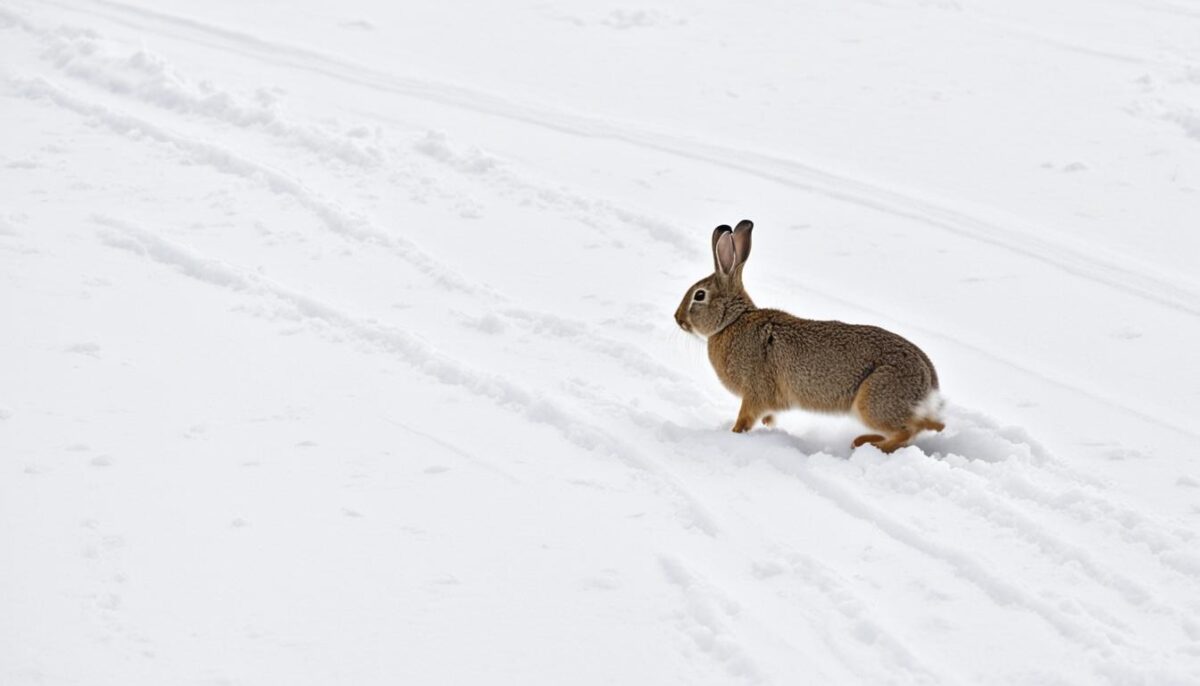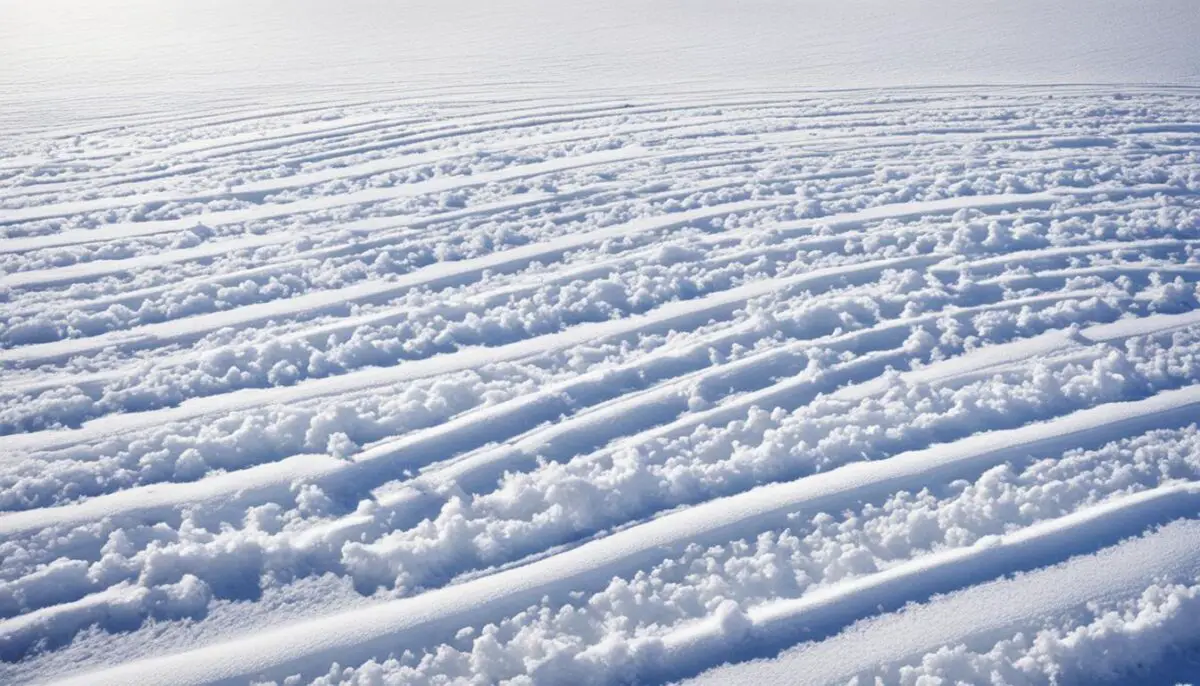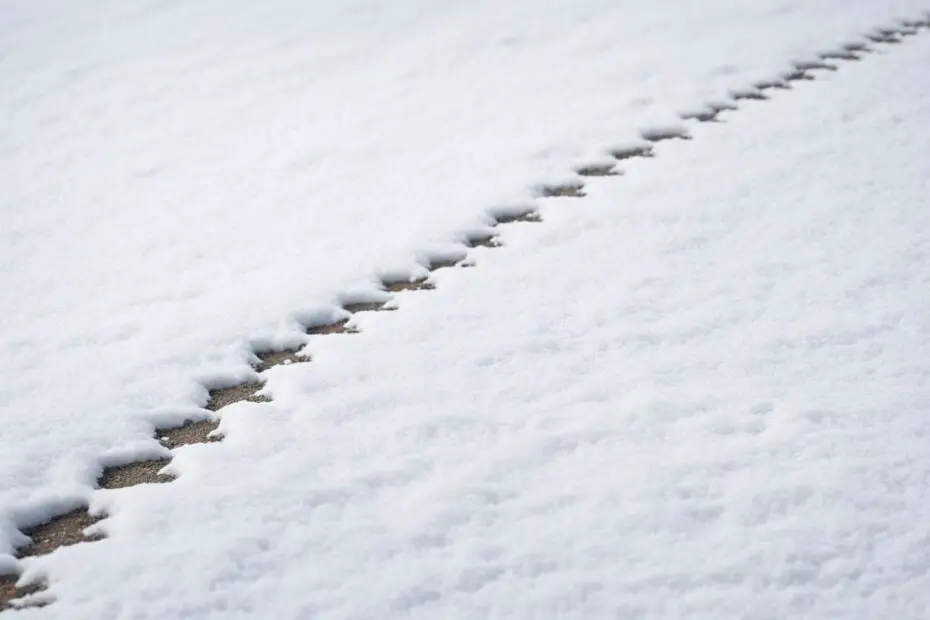When it comes to exploring the wonders of nature, there’s something magical about stepping into a winter wonderland covered in fresh, untouched snow. As you take in the serene landscape, you may notice peculiar animal footprints, left behind as a sign of life amidst the icy terrain. But how can you distinguish between squirrel tracks in snow and rabbit tracks, especially when they seem so similar?
Fear not, fellow adventurers! We’re here to shed light on the distinguishing characteristics of squirrel and rabbit tracks, equipping you with the knowledge to accurately identify these elusive creatures. By understanding the differences in their footprints, you can embark on a snowy expedition and unravel the captivating stories written in the snow.
So, grab your warm coat, put on your snowshoes, and let’s unravel the captivating world of squirrel tracks and rabbit tracks in snow!
Key Takeaways:
- Distinguishing between squirrel tracks and rabbit tracks in snow can be challenging, but knowing the differences makes it easier.
- Rabbit tracks typically exhibit a hopping or bounding movement and leave round circles as prints.
- Squirrel tracks have wide and blocky bounding patterns, with long and finger-like toes.
- By observing the shape of the group of four tracks and the presence of fur on the toes, you can accurately decipher between squirrel and rabbit tracks.
- Exploring wildlife tracks in the snow can be a thrilling adventure, offering insights into the animals that inhabit your area.
Rabbit Tracks in Snow
Rabbit tracks in the snow are a common sight when venturing outdoors in winter. These tracks can provide valuable insights into the presence and behavior of these furry creatures. By understanding the characteristics of rabbit tracks and distinguishing them from other tracks, such as squirrel tracks, you can become a skilled observer of wildlife in snowy landscapes.

Rabbit tracks are distinctive and can be easily identified. They are characterized by the hopping or bounding movement of rabbits, leaving behind a unique pattern in the snow. The front feet of a rabbit are short and result in round circles as prints, while the longer back feet leave elongated prints. These tracks often form a rectangular shape when observed as a group of four.
One key feature of rabbit tracks is that the toes are usually covered by fur, making it difficult to see each individual toe. This is a useful characteristic to differentiate rabbit tracks from other animal footprints.
When encountering rabbit tracks in the snow, it is fascinating to imagine the agile movements of these creatures, navigating their environment with precision and speed. Observing rabbit tracks can provide a glimpse into their world and enrich your winter adventures with a deeper appreciation for nature’s wonders.
Squirrel Tracks in Snow
When it comes to identifying animal footprints in the snow, squirrel tracks are a common sight. Understanding the characteristics of squirrel tracks can help you distinguish them from rabbit tracks and other wildlife. Here’s what you need to know:
Squirrel Track Characteristics
Squirrel tracks in the snow have a distinct wide and blocky bounding pattern. They typically have two small front feet and two longer back feet, similar to rabbit tracks. However, the key difference lies in the shape of the tracks and their toes.
Squirrel tracks often display long and finger-like toes, which are more slender and defined compared to rabbit tracks. These toes leave clear imprints in the snow, indicating the movement of the squirrel. The back feet’s toes are slightly longer than the front feet’s toes, pointing in the direction of the squirrel’s travel.
Additionally, squirrel tracks are known to lead to trees or other structures. Squirrels are agile climbers and often use trees as pathways, so following their tracks can lead you to their current or recent presence.
To give you a better visual representation, here’s a comparison table of squirrel tracks and rabbit tracks:
| Squirrel Tracks | Rabbit Tracks |
|---|---|
| Wide and blocky bounding pattern | Round and rectangular bounding pattern |
| Two small front feet and two longer back feet | Two short front feet and two longer back feet |
| Long and finger-like toes | Toes usually covered by fur and less visible |
| Tracks often lead to trees or structures | No specific pattern leading to trees |
By recognizing these distinguishing characteristics, you can confidently identify squirrel tracks in the snow, distinguishing them from rabbit tracks and other wildlife. So, the next time you come across animal footprints in the snow, you’ll be able to pinpoint the presence of these agile climbers.

Comparison of Rabbit and Squirrel Tracks in Snow
When it comes to identifying animal footprints in the snow, it’s important to understand the key differences between squirrel and rabbit tracks. While both animals have two small front feet and two longer back feet, there are distinguishing characteristics that can help you accurately decipher between the two types of tracks.
Differences in Shape
Rabbit tracks in the snow form a rectangular shape when a group of four tracks is observed. This is a distinctive feature that sets them apart from squirrel tracks. On the other hand, squirrel tracks appear more blocky or square in shape.
Toes and Fur
Another noteworthy difference lies in the toes of the tracks. Squirrel tracks often display long, skinny toes while rabbit tracks have fur-covered toes that are usually not discernible. This can be an important distinguishing characteristic to look out for when deciphering tracks in the snow.
| Characteristics | Rabbit Tracks | Squirrel Tracks |
|---|---|---|
| Shape | Rectangular | Blocky or Square |
| Toes | Fur-covered and not easily visible | Long and skinny |
By observing these distinguishing characteristics, you can confidently differentiate between squirrel and rabbit tracks in the snow. This knowledge will elevate your wildlife tracking skills and enhance your experience in the great outdoors.
Conclusion
By carefully observing the distinguishing characteristics of squirrel tracks in the snow compared to rabbit tracks, you can easily identify which animal has made its presence known. The shape of the tracks, the presence or absence of fur on the toes, and the overall movement pattern can provide valuable insights into the wildlife in your area.
Next time you wake up to a snowy morning, don’t let the tracks go unnoticed. Step outside and embrace the opportunity to embark on a thrilling snowy adventure of wildlife tracking. Whether you’re an avid nature enthusiast or a curious observer, deciphering the animal footprints in the snow can be both educational and exciting.
Winter is an ideal time for wildlife tracking. The crisp white canvas of snow offers a unique opportunity to witness the hidden lives of the animals around us. So, grab your warm coat and venture into the winter wonderland to explore the fascinating world of animal footprints in the snow.
FAQ
What are the key differences between squirrel tracks and rabbit tracks in the snow?
Squirrel tracks are wide and blocky, with long and finger-like toes, while rabbit tracks are round circles with fur-covered toes that are difficult to see. Squirrel tracks often lead to trees or other structures, whereas rabbit tracks form a rectangular shape when grouped together.
How can I identify rabbit tracks in the snow?
Rabbit tracks in the snow are characterized by round circles left by their two short front feet and elongated prints from their longer back feet. The toes of rabbit tracks are usually covered by fur, making it difficult to see each individual toe. Additionally, rabbit tracks form a rectangular shape when a group of four tracks is observed.
How can I identify squirrel tracks in the snow?
Squirrel tracks in the snow have a wide and blocky bounding pattern. They consist of two small front feet and two longer back feet, similar to rabbit tracks. Squirrel tracks often display long and finger-like toes. Following squirrel tracks will often lead you to a tree or other structure, as squirrels are known for their climbing abilities.
What are the distinguishing characteristics between squirrel and rabbit tracks in snow?
While both squirrel and rabbit tracks have two small front feet and two longer back feet, the primary difference lies in the shape of the group of four tracks. Rabbit tracks form a rectangular shape, while squirrel tracks look more blocky or square. Additionally, squirrel tracks often display long, skinny toes, while rabbit tracks have fur-covered toes that are usually not discernible.
How can I accurately decipher between squirrel tracks and rabbit tracks in the snow?
To accurately distinguish between squirrel tracks and rabbit tracks in the snow, pay attention to the shape of the tracks, the presence of fur on the toes, and the overall movement pattern. Observing these differences can help you identify which animal has left its mark.


